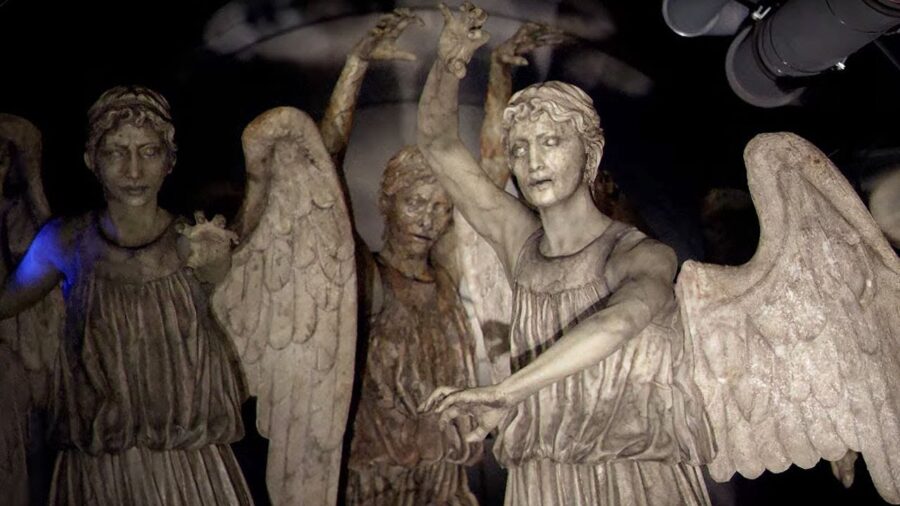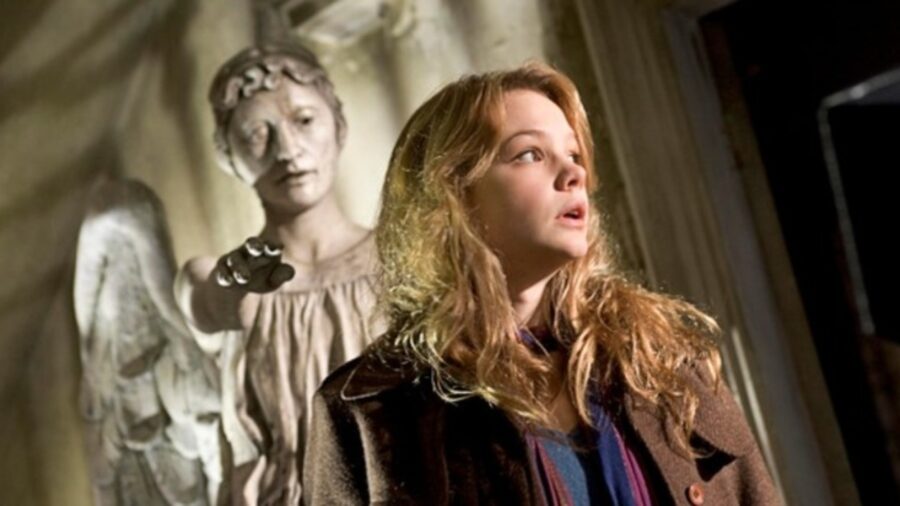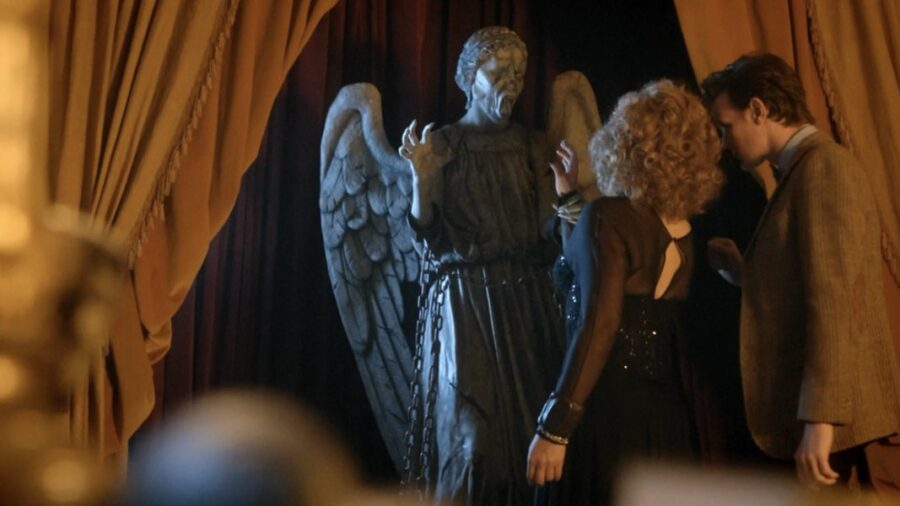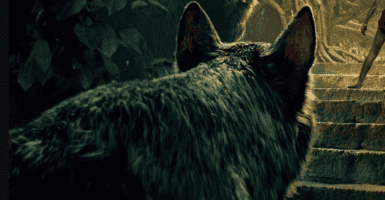Doctor Who Weeping Angels: Everything About The Terrifying Villains

For as fun as the modern era of Doctor Who has been, audiences get periodic reminders that this BBC franchise never forgot how to scare the hell out of them. The biggest reminder comes in the form of The Weeping Angels: horrific statues that move closer whenever victims look away until those victims suffer a fate worse than death. It can be difficult to figure out what the Angels’ whole deal is, but not for us: go grab yourself a big bag of Jelly Babies while we explain everything you need to know about the most terrifying villains in the entirety of Doctor Who history.
Doctor Who introduced the Weeping Angels, monsters that can’t move if someone is watching them, in “Blink,” considered one of the best episodes in the series.
The Weeping Angels were first introduced in the Doctor Who episode “Blink,” and it lays out the basic powers and abilities of these strange aliens quite nicely. The Angels are statue-like in appearance, allowing them to effectively hide in plain sight when pursuing their prey. The Weeping Angels can’t move when someone is looking at them, hence the title of the episode…when an Angel is coming for you, every single blink of your eyes effectively brings you one step closer to coming into contact with the creature.

It’s not until the Doctor Who episode “The Angels Take Manhattan” that we discover exactly what happens when the Angels touch someone. Victims end up getting sent to the past, allowing the Weeping Angels to snack on the potential energy from the future lifetime they stole from their victims (though they can also feed on alternative energy sources such as radiation). It is due to contact with the Angels that fan-favorite companions Amy and Rory end up stuck in Manhattan in 1938, and due to timey-wimey reasons, the Doctor would never be able to visit that time and place to see his old friends.
Later episodes of Doctor Who showed the Weeping Angels are able to infect photos and recordings, eventually creating a new angel.
Future Doctor Who episodes helped fans learn more about both the powers and the weaknesses of the Weeping Angels. In addition to their aforementioned angelic touch and ability to mimic statues (which is a sophisticated version of quantum locking), these baddies have a kind of super-speed and the ability to move victims through time as well as space (just think of them as an uglier and more limited version of the TARDIS). And if a Weeping Angel has fed on enough energy in the recent past, then it has the physical strength necessary to snap a victim’s neck.

However, these Doctor Who villains have creepy psychic powers that put their enhanced strength to shame. When Weeping Angels make eye contact with victims, it’s possible for them to essentially infect the visual center of the victim’s brain. Victims could hold off the infection by closing their eyes, but every moment their eyes stayed open brought them one step closer to a Weeping Angel fatally emerging from their bodies.
Weirdly enough, the Doctor Who episode “The Time of Angels” verified that this worked with technology as well as biology. If someone took a photo or video recording of a Weeping Angel, then it gained the powers of and would eventually become a Weeping Angel. Angels could also manifest due to strong visualization on the part of someone else, like when Claire Brown had a premonition of an Angel attack in “Village of the Angels” and became host to an angel.
Twisting the usual time manipulation found in Doctor Who, Weeping Angels send their victims to the past, and feed on the energy of a future that will never be.
While Weeping Angels can communicate with each other just fine, they apparently need to use the consciousness of someone they had killed in order to communicate with others. And these creatures are remarkably hard to kill: as we see in Doctor Who episodes like “The Time of Angels,” the primary way these aliens die is starvation if they haven’t fed in a long time (this may happen naturally if two of them get stuck staring at each other since neither will ever blink). It’s also possible to poison alternative energy sources they may be feeding on, like when the Doctor poisoned their time energy source in “The Angels Take Manhattan.”
Ultimately, The Weeping Angels remain the most terrifying villains in Doctor Who history due to their creepy design and relentless, ruthless stalking of their victims. The Doctor is a source of endless energy and inspiration, and these bad guys are his opposite number: they exist only to feed on energy and inspire dread. To stay energized and keep the existential dread at bay, your best bet is to binge all of the Weeping Angel episodes when the show comes to Disney+ later this year.












